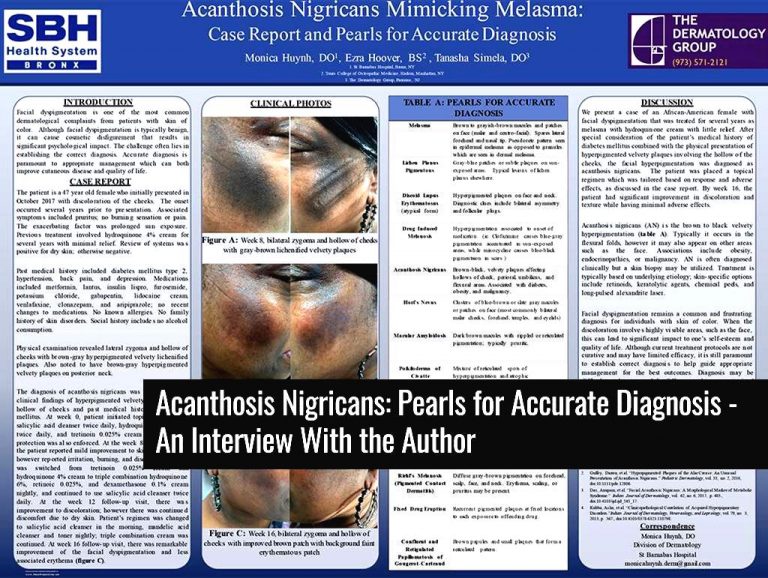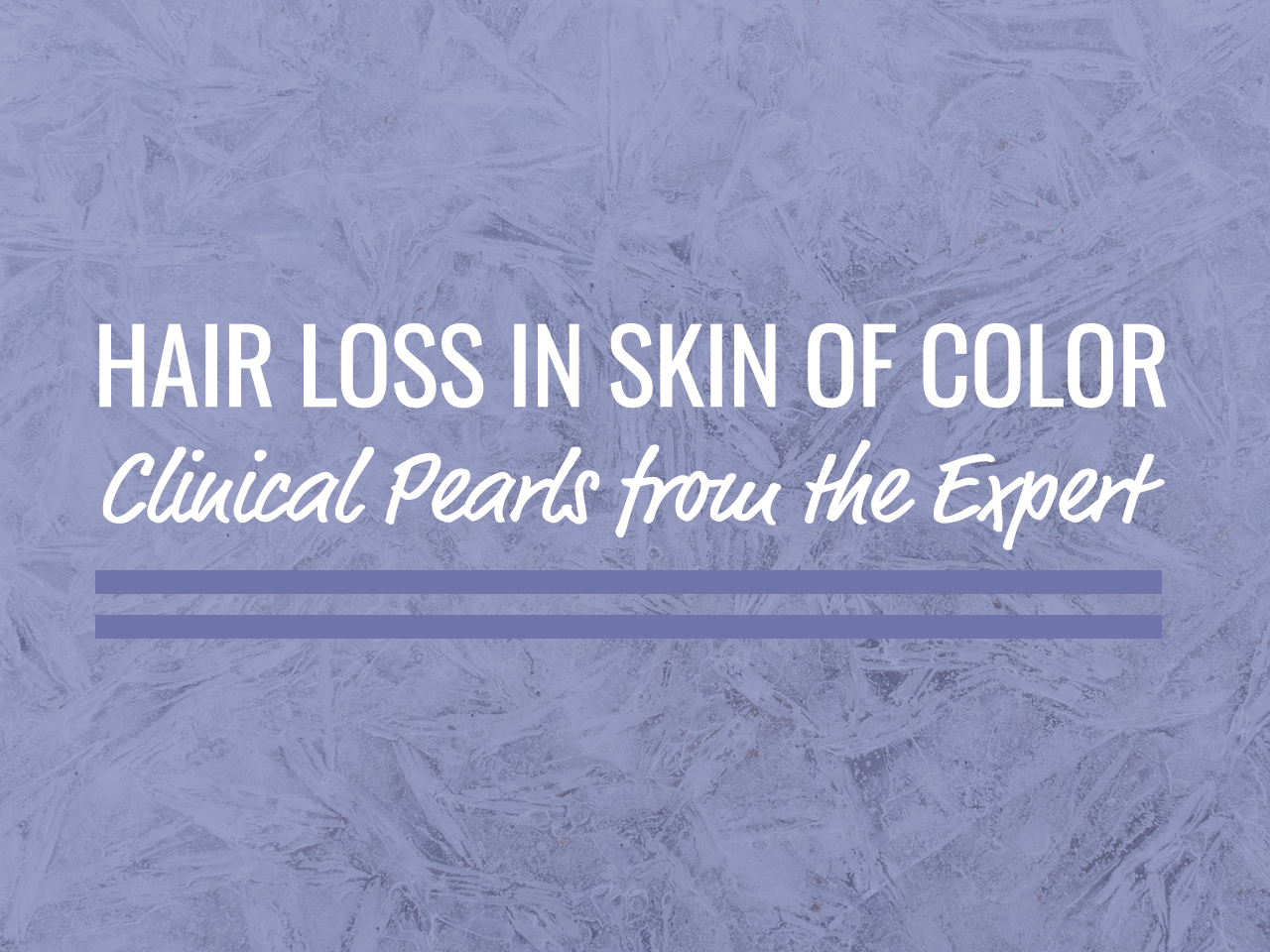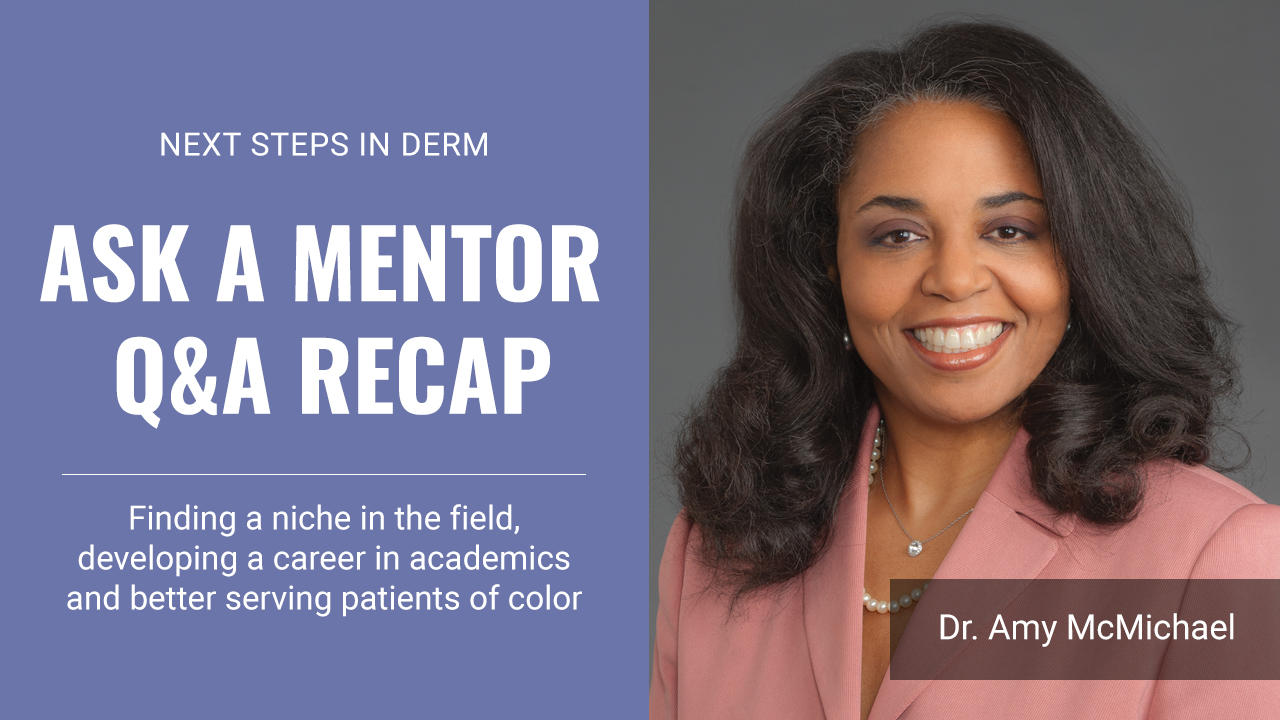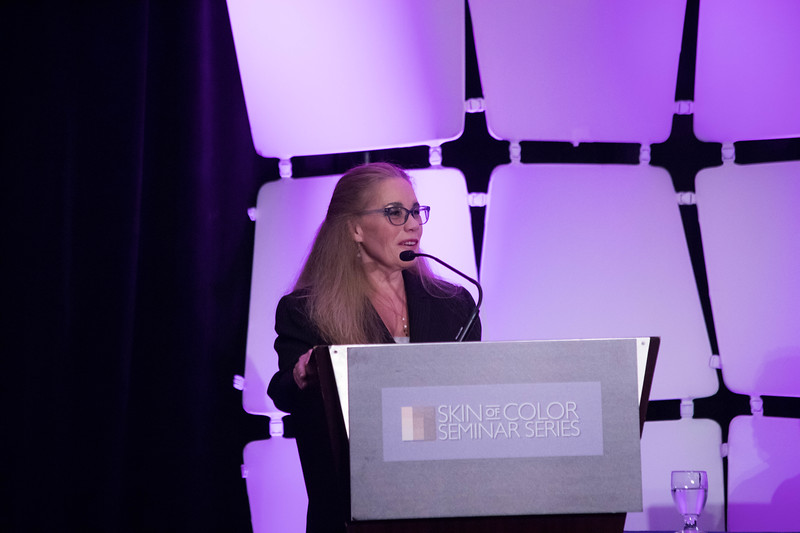This article features a recap of Dr. Hilary Baldwin’s talk on the etiology, risk factors, and treatment of keloids at the 2018 Skin of Color Seminar Series, now known as the Skin of Color Update. Dr. Bridget Kaufman, onsite correspondent for the meeting, shares highlights directly from the talk. Dr. Baldwin focused on earlobe keloids (cartilage piercing keloid) in particular, which may present with several different morphologies: anterior button, posterior button, wraparound, dumbbell, and lobular. *Clinical pearls* from this session are bolded, underlined and marked with asterisks.
Some patients develop cartilage keloids and others do not. Based on a study of 220 patients at Kings County Hospital, there appears to be no difference in rate of cartilage piercing, metal sensitivity, types of earrings worn, piercing method, hormonal influences, or age at piercing between keloid formers and non-keloid formers. In the keloid former group, 12.8% of patients developed keloids at the first piercing, and the risk of keloid formation dramatically increased at each piercing thereafter (70.2% risk for 2nd piercing).
Important Points:
– *Ear pierces on babies have a 0% risk of keloids*
– *Piercings done pre-menarche have a significantly lower risk of keloids than those performed post-menarche*
– *First pierces rarely keloid*
– *The chances of subsequent pierce keloiding in a keloid former is at least 20% or higher*
–*Earlobe keloids are significantly easier to treat than classic keloids on the body.* Earlobes are a discrete tissue with little to no tension, pressure dressings can be used, and patients tend to be very motivated and compliant. *For surgery alone, recurrence rate on the ear is 39-42% (vs. 100% on body). Surgery plus corticosteroids and surgery with radiation therapy for earlobe keloids are associated with a 1-3% (vs. 50% on body) and 0-25% (same for body) risk of recurrence.* Imiquimod helps prevent keloid recurrence when used on the earlobes, but does not appear to be effective on other body parts.
Dr. Baldwin’s method for excising dumbbell keloids called *dumbbell keloids for dummies:*
- Shave off anterior button
- Shave off posterior button
- Measure diameter of keloid core
- Select punch to be at least 1mm wider than core
- Stabilize and punch through to a tongue depressor
- Suture right/left anteriorly and superior/inferior posteriorly
Unfortunately, not all keloids can be surgically excised. The major dogma of keloid surgery is “don’t leave any keloid tissue behind.” *Hilary’s dogma of earlobe keloid surgery is “a non-functional earlobe is a treatment failure.* Dr. Baldwin performed a study in 5 patients in whom complete removal of keloids would leave a non-functional earlobe. She sculpted the keloid to earlobe shape, injected interferon-alpha 2b 1.5-million units/cm, covered the wound with a compression earring, and allowed for secondary intention healing. In the patients who completed therapy, there was no uncontrollable recurrence at 4-6 year follow-up, although all patients are continuing the use of pressure earrings. Based on these results, *the combination of targeted keloid removal, interferon-alpha 2b injection, and pressure earrings may be an option for patients with large, difficult-to-treat keloids.*
Read more.
Register for Skin of Color Update for lectures and pearls on keloids and more.







